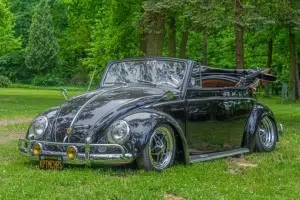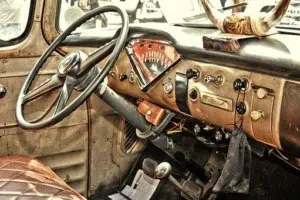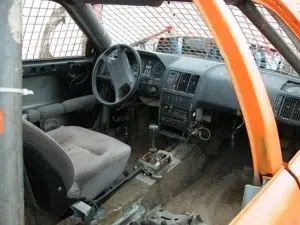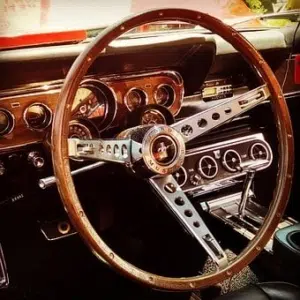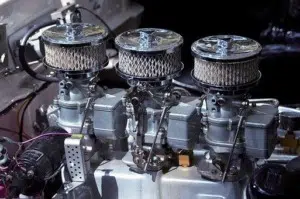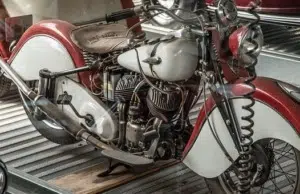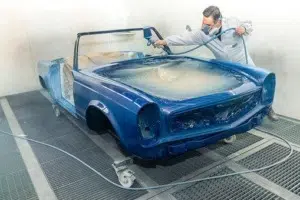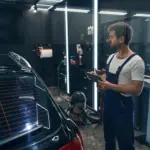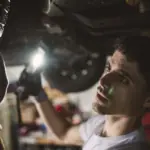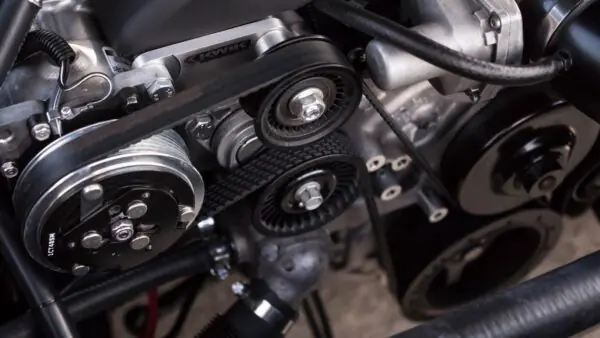Classic Car Restore Guide
What do you think about classic car restoration? Nowadays, classic car restoration is one of the biggest dreams among car lovers.
Classic car restoration projects are challenging. First, you need to understand the technology of traditional models. If we are technically speaking, it’s more than 150 years since we have had a car. However, cars are a passion for many of us, and we admire that classic car personality.
The enthusiastic car world draws attention to car restoration and is ready to shed some additional love. You can find classic cars for sale and restore them according to your choice with some effort, patience, and love. It may be challenging to repair a classic car, but you can find your dream vehicle.
Moreover, restoring a classic car and spending quality time with the most exciting project is fun. For drivers that are looking for a wealth of information on classic cars, his guide is for you.
Here we will provide a compelling classic car restoration guide to help you with every step during the project.
So let’s dive into it.
Choose the right classic car for restoration.
The essential step in a classic car restoration project is to make the right decisions regarding car selection, parts, repair, and replacements. Many want to own a traditional car restoration project for fun, and some want to update their old car. The restoration plan helps you decide what classic car you want. There are different kinds of restorations, and every type has different outcomes.
The four primary restoration categories include:
- The street show is one of the major categories in which a project owner gets the car in fully working condition and changes its major cosmetic parts. It will help to modify the entire look of classic cars into modern models and admire other users.
- Driver restoration also falls within the fully functional car conditions. Usually, it includes replacing parts with some minor adjustments in exterior looks. The cosmetic adjustments give a nice feel to classic car restoration projects.
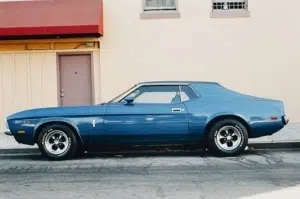
- Concours is one of the highest levels of car restoration in which you need to rebuild the car up to its current standard. Usually, professional car restoration project owners go with the Concours category. It falls in the show or street show type of restoration compared to driving projects.
- The show cars have some similarities with the street show restoration category. It requires the vehicle that needs professional assistance for repair. So the labor work quality is higher in show car restoration compared to all other types.
Before choosing the right car for restoration, it is essential to remember that you are going into a big commitment that includes labor, money, and time. Initially, you may find it a good idea but regret it. Therefore, think twice before getting a classic car for restoration. Initially, you may get a good deal still; repair requires a financial struggle. Sometimes you need to restore all the parts, which requires significant investment.
Things to consider while selecting a classic car for restoration
The classic car restoration project will only start if you have the ideal car. Many beginners need help to choose the right classic car for restoration and face failure. Finding an old classic car with the precise make, year, and model demands time, money, and effort.
However, here are some factors to consider while choosing a classic car for restoration.
Get help from an expert.
Tagging an expert with yourself while looking for a classic car checklist is always advisable. It will help you identify the right classic car for sale that gives value to your purchase. The experienced car person will point out some issues you may find during the restoration process. So having an expert during classic car hunting is beneficial for a price-worthy investment.
Select the cars with parts available on the market
Finding the right parts during restoration is also a hectic step. Therefore it is essential to get a classic car whose components are readily available in the market. If you get the vehicle, but its replacement parts are unavailable in the market, you need to stop your project.
Classic car potential
There are plenty of classic cars that lose their value in the market. But some vehicles still have good value for your money. So ensure to get the classic car for restoration that titans some value. It will give you considerable value even after some years. So remember that you don’t need to consider the model or make variants during car hunting. Moreover, even if you find an expensive classic car, it will also give you worth in future years after restoration.
.
Don’t consider rusty cars.
Rusty cars are expensive to restore. Always look for a well-maintained old vehicle that goes along with your money and time. If you get a rusty car, you must fabricate it or purchase aftermarket spare parts. Therefore it is essential to avoid rusty vehicles, especially when getting them for a restoration project. It will help to prevent inconvenience in the long run.
I prefer looking for a running car
The running car gives you clarity that it has fewer mechanical issues. It means you must replace the cosmetic parts rather than the mechanical ones. Moreover, the running vehicle is also an indicator of the well-taken care of the car. You don’t need to replace essential car parts like the engine or radiator during the restoration process.
easy steps to restoring classic cars
Restoring classic cars is a project worthy of praise. However, it is not easy as you can stop midway due to frustration. Repairing any vehicle is not a one-person job. You need to ask for help even if you are a beginner.
Here is the step-by-step process that helps you during your classic car restoration journey.
Identify your end goal.
Before starting the restoration project, you need to identify your end goals. It will help you determine the restoration cost, time, and effort, and you can plan the entire work according to it. You can take help from some online sites for restoration and then share it with your family, friends, or others. Once you know about your classic car’s final project or end goal, write or draw it on paper. You can save money and time by planning everything in detail before beginning your project. Determination of the end goal will motivate you with classic car restoration, and you will reach your target soon.
Dismantle classic car
The actual classic car restoration process starts with dismantling the vehicle. Many beginners need to correct their mistakes at this step, creating a mess. When you disassemble the parts, you label or video them side by side. Don’t throw everything in a single pile and assume you can find it when you want to put them back. You can take pictures of every part and save them to save time and frustration.
Moreover, they put all small parts in zip lock bags with labels, including nuts, bolts, and many more. The wires that you disconnect also need a tag using masking tape.
The dismantling step varies with the condition of the car. The rusty vehicle has fewer dismantling efforts than a good working car.
Focus on one restoration project at a moment
Many beginners are distracted right after dismantling the car. Ensure that you only focus on one project and show dedication. Once you dismantle every part of a classic car, it will give you an idea of its condition.
You may learn about additional issues that need more focus during restoration projects. Therefore it is essential to divide your restoration project into several parts. Make a plan for the restoration, and then work according to it to maintain focus. Moreover, it will help you to buy cost-effective parts for specific parts, and you can install or bolt them effectively. Ensure to save yourself from the additional burdens at a time that may lead to mistakes. You may lose money, time, and effort if you focus on multiple projects simultaneously.
Body Work of classic car
Bodywork is the actual working part during classic car restoration projects. Once you dismantle every part, then it’s time for
Bodywork is the actual working part of classic car restoration projects. Once you dismantle every detail, then it’s time for bodywork. Start assessing the fenders, corner panels, lights, roof, pillars, bumpers, etc. If you want anything unusable, then make a list to get new. However, if the metalwork is required, you must finish it at that point.
Remove all the rusted parts and weld new ones according to requirements. It requires a professional welder, or you can do it yourself if you have experience.
You can use the sandblast for repairing the rusted parts in classic cars. Sanding the entire vehicle will take a lot of time and money. So ensure to call for the professional, as they have tools for classic car restoration. Moreover, you can use body fillers to fix the issues in the body. If you find a ¼-inch problem, you can repair it with body filler. The deep dents or problems need replacement as compared to repair.
In addition, after fixing the body rust, you need to look for dents. Prime all the large or small marks to give a refined look. However, the next step is to paint the body, and you can paint your classic car yourself. It requires practice and tools to help you achieve a new look according to your dream car.
Reinstallation of components
Now the bodywork of classic cars is complete. You must wait a few days before installing the components in your classic car. Ensure that car body paint is dry completely before putting parts. However, reinstalling the significant components, including exhaust, engine, transmission, driveline, etc. It requires specific tools that help in the reinstallation of parts.
If you find any parts damaged, rebuild or replace them before installation. The best strategy is to look at the engine and transmission and then work on other classic car components.
Work on suspension, brakes and axles
Recheck the significant components after installation and move toward the small parts, including brakes, axles, and suspensions.
Start fixing the axles and, step by step, move to other parts. It will help to move to stay consistent, and you don’t skip any part during installation. However, the next step is for the suspension of a classic car. Remember that breaks need to be replaced during every classic car restoration. Shocks lose their potential over time, and leaf springs get rust to perform the job.
The classic car restoration project requires significant focus on axles, brakes, and suspensions. Usually, classic cars have drum brakes that you may need help finding in modern vehicles. However, drum brakes will work better than disc brakes. Add brake boosters to your drum brakes and convert them into front brakes to disc brakes.
Every brake option is durable, and you need to find a comfortable option according to the model of your classic car. The brake restoration is more expensive than all other components. You can choose the brakes according to your budget and install them with master cylinders or brake lines.
Fuel System restoration
After installing the significant components, the next step is to work with lines and wires. Before starting the wiring, you can install the fuel system. Ensure you put substantial time into installing the tank, fuel rail, filler neck, and fuel line for proper working. The simple step is to route cables around all other components to make secure connections.
Braking system restoration
You can relate this step to the previous one in which we installed the brakes and suspensions. However, it’s time to install the brake lines and the master cylinder. When installing the master cylinder, separate the residual fluid that may come in contact with brake fluid. Brake fluid is corrosive and can burn the skin or body parts. Therefore, wear gloves and glasses while handling the master cylinder and brake lines.
Electrical Harness
The classic car restoration process needs significant focus on every minor part. Remember that you are working on a car rebuild project that needs more focus and time than regular repair.
So when you hook up the lines in your classic car, start working on electrical components and wiring. It includes wiring every small to a significant part, including radiator or fans.
If you mess up the wiring, then it may end up causing the issues, or your classic car may not start. Check the wiring before installing the interior items and route them appropriately. It will make your process easy and comfortable.
However, many beginners need help with electrical work, especially in classic cars. But it has considerable importance in the traditional car restoration process.
Interior of classic car
Now it is one of the appealing and fun parts of the classic car restoration project. The installation of interior components helps you set the entire car according to your requirements. Ensure you wait for this step and perform the rest of the facilities before it.
During interior installation, you must start from the carpet to the headliner. Then install seats, radio, heater, AC and other elements. Lastly, install the dashboard according to the labels you mentioned during the dismantling.
Wheels and tires restoration
Every classic car restoration project has new wheels that work amazingly and give new feels. The last piece of hard work in your project will provide a final look for your restoration project.
If you find the rims are in good condition, look no further. However, get new tires for your classic car when ready to install it. It will give a clean look to your restoration project.
Troubleshoot restored classic car
Now it’s time to take out the classic car after restoration and have a drive. It will give all the fruit to your efforts if everything goes well.
However, initially, it will show some minor signs if anything is missing and you need to fix them. Sometimes minor problems appear that you don’t expect during the restoration work. Things will move around, and you can set them according to demand, like wiring issues.
Please don’t hesitate to seek professional help if it is needed. You can also attend shows or talks about your classic car model restoration and find the problems. It will significantly help and give you many new ideas for your restoration project.
Final words
Classic car restoration is a fun, costly, and time-consuming activity. Car lovers want to spend quality time with cars; restoration is the best choice. However, if you also want to restore a classic car, follow the guidelines above and enjoy the process.

